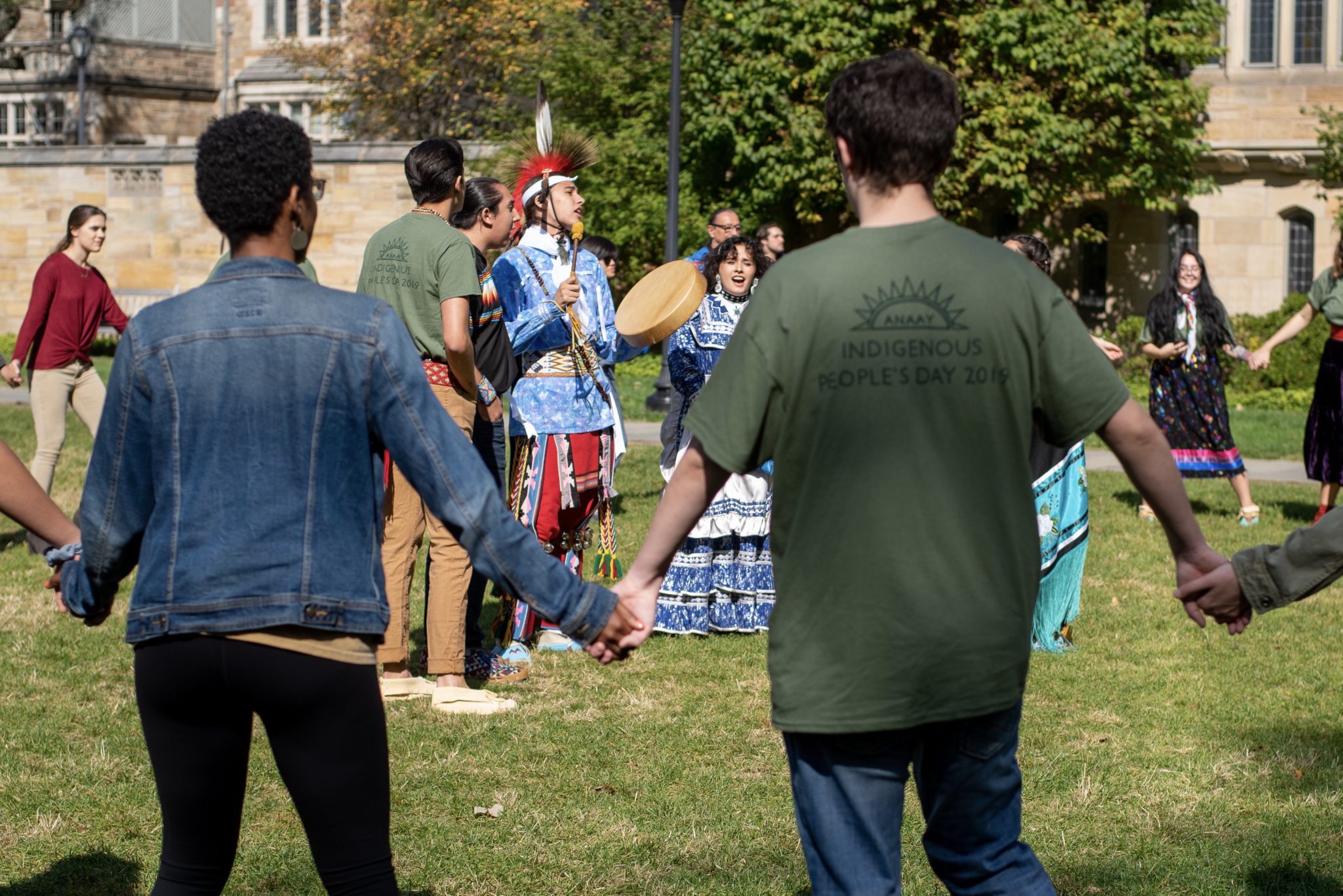
Courtesy of Charles Gleberman
As November comes to a close, the Yale community concludes its celebration of North American Indigenous Peoples Month with a full roster of events, including an exhibition featuring Indigenous artists at the Yale University Art Gallery and the annual Ivy Native Council Fall Conference.
The monthlong celebration offers a variety of events, in order to “visibly honor [the] culture and contributions” of Native peoples, according to Matthew Makomenaw, the director of the Native American Cultural Center. Every week of November, at least four campus events have taken place — ranging from community dinners to faculty lectures — that have been organized by a wide range of groups and departments at Yale. Makomenaw told the News that he thought the events of the month went well and that they showcased Native peoples and their culture on campus.
“The Native American Cultural Center at Yale has worked with several campus departments and the Association of Native Americans at Yale to provide an array of events highlighting Native artwork, career pathways, speakers, history, and contemporary life,” Makomenaw wrote in an email to the News. “The support of many departments and peoples on campus has made this a great month of activities.”
To organize events this month, the NACC collaborated with six on-campus groups — the Association of Native Americans at Yale, the Yale Group for the Study of Native America, the Yale School of Architecture, the Yale University Art Gallery, the Yale Center for British Art and the “Beyond the Land Acknowledgement” series.
Ned Blackhawk, the faculty coordinator for YGSNA, told the News his group collaborated with the NACC to open an art exhibition — “Place, Nations, Generations, Beings: 200 Years of Indigenous North American Art” — at the YUAG. He stressed the importance of the NACC, adding that much of current “campus programming, intellectual activities and various flows of enrichment” originate from the center.
“Native American/North American Indigenous Peoples’ Month provides a sustained, focused period of introspection, engagement, and ideally understanding with the experiences and lived realities of life for Native American peoples,” Blackhawk wrote in an email to the News.
The exhibition at the YUAG opened on Nov. 1 and aims to present “a wide variety of Indigenous voices and experiences through more than 75 artworks dating from the early 19th century to the present,” according to the exhibition’s description. The student-curated exhibition is the first display of Indigenous art that brings together objects from the YUAG, the Peabody Museum of Natural History and the Beinecke Rare Book and Manuscript Library.
The month’s celebration comes shortly after students and community members celebrated Indigenous Peoples’ Day on Oct. 15. Indigenous Peoples’ Day is celebrated in place of Columbus Day to recognize and celebrate the strength and resilience of Indigenous communities in the face of settler colonialism.
“[This month] showcases the depth and diversity of the continent’s hundreds of distinct Indigenous communities and does so implicitly in opposition to one-dimensional portraits of European-Indian relations that are commemorated later this month,” Blackhawk said.
NACC house staffer and ANAAY executive board member Meghanlata Gupta ’21 — from the Sault Ste. Marie Tribe of Chippewa Indians — underscored the importance of the Ivy Native Council Conference. She told the News that the conference allows Indigenous peoples across the Ivies a chance to come together to collectively talk about their experiences. This year, 21 students from Yale attended the event at Brown University. Gupta said that at the conference, students could attend workshops, listen to lectures and share their experiences. Every semester the conference is held at a different Ivy League campus, and this year’s hosting school decided to prioritize “Native Networking and Connections” as the conference’s theme.
According to Gupta, this month’s celebration is necessary as it represents a “chance for Indigenous peoples to show our contemporary strength and our contemporary survival.”
“A lot of times Indigenous issues and Indigenous cultures and peoples are taught as a thing of the past,” Gupta said. “And so people often consider us a people of the past. But it’s great to have this month because we can show people that we’re here. We’re out here, we’re organizing, we’re getting Ph.D.s, we’re resisting colonial institutions, we’re out here doing a ton of really great work.”
While Gupta noted that the Indigenous community faces “a lot of struggles” — such as reports of missing and murdered Indigenous women as well as threats from climate change — she emphasized that it is also “really, really, strong.” She added that their culture is thriving and continuing to practice traditions while “incorporating new things.”
According to Gupta, there are around 570 federally recognized tribes, but the federal government does not recognize many other communities. She said November, in particular, pushes people to think critically about those communities and their education about Indigenous peoples and nations. She added that “what makes this month really special” is how it “shows the strength of our people today” and the power of acknowledging the spaces they exist in today.
“Ivy Native Conference is so good because … it shows that we’re here in these institutions that were not meant for us, and we’re doing a lot of great work in them,” Gupta said. “And it’s a chance for us to really share work, learn from others and really just be connected and build relationships with other Indigenous people across Ivies.”
President George H. W. Bush ’48 designated November “National American Indian Heritage Month” in a joint resolution in 1990. Since 1994, similar proclamations under variants of this name have been issued each year.
Alayna Lee | alayna.lee@yale.edu
Audrey Steinkamp | audrey.steinkamp@yale.edu







